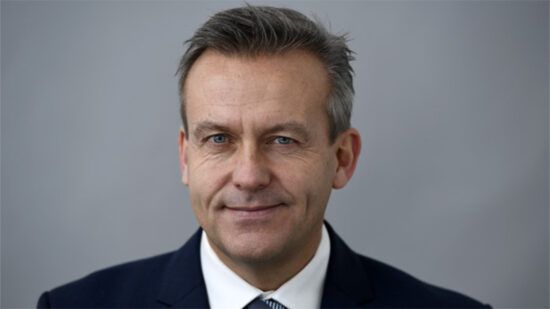In 2023, the world lost nearly 16 million acres of forest, according to the 2024 Forest Declaration Assessment, with the primary causes of forest loss being commodity agriculture, especially livestock grazing. The World Wildlife Fund, meanwhile, says in the Amazon alone, around 17% of the forest has been lost in the past 50 years, mainly due to forest conversion for cattle ranching.
Louise Heffernan, senior advisor in finance and investment at The Nature Conservancy (TNC), discusses the financial materiality of deforestation risk for investors, the level of exposure that UK financial institutions face, and what role they can play in driving supply chain transparency.
Could you explain the financial materiality of deforestation risk for investors?
Over the past four or five years, people have really become aware of, and accept, the dependence between our financial system and nature and biodiversity. We started tackling climate change and realised that its impacts could be really material for the financial sector because their financing activities have these risks embedded in their portfolios.
That same theory has been applied to the broader suite of risks associated with nature and biodiversity loss, and the ecosystem services that underpin our economy. A lot of that was really well articulated in 2021 in the Dasgupta review, which was commissioned by the UK Treasury, bringing together a lot of evidence that had been conducted by academics, scientists and economists to really demonstrate that fundamental relationship between our economy and nature and biodiversity.
Within that, deforestation is perfectly placed between the understanding we have of climate and then this newer understanding of its relationship with nature and biodiversity. Solving deforestation can have huge benefits for climate, for nature, for people and for food security – and finance is absolutely the oxygen of commodities.
Every single soybean, litre of palm oil or steak is financed from the start of its production to being served on our plates. So, while the production of these commodities is coupled with deforestation and the broader conversion of ecosystems, financial institutions will continue to face serious reputational and capital risks that are associated with that.
What financial institutions are not doing is pricing in and expecting the volatility in commodity markets that could affect their investments because of the changes we’re seeing in ecosystems and the services they’re providing. This was articulated really well recently, when a group of companies within the agricultural supply chain, anonymously at the moment, wrote an open letter to their investors who, they claimed, are not aware of the operational challenges the industry is facing in relation to climate change and biodiversity loss, and how that is really starting to bite in terms of the amount of food they can produce.
In the same way that financial institutions were concerned about stranded assets in relation to coal, they will need to think about that in relation to commodity markets as well.
How big is the scale of risk for UK financial institutions?
According to research conducted by Global Witness, UK financial institutions are the third largest investor globally in shares and bonds issued by forest risk companies – companies that have high levels of deforestation and conversion within their operations – investing over £1bn in the past three years alone. UK banks, meanwhile, are the seventh-largest creditors of those kinds of companies. So, it really shows how intertwined this material risk is with the UK financial sector.
We’re starting to see policymakers and regulators awaken to this concern for the UK market itself. There was a piece of research released last year by the Green Finance Institute, which was conducted by Oxford University and DEFRA in collaboration with the Bank of England, that started to quantify where these risks might hit the road for UK PLC. So, the Bank of England is aware of this, and they’re starting to think about what it means for our market, and what they need to do about it.
But this exposure doesn’t necessarily have to equate to risk. There is a real point of leverage that the UK financial sector can have over this particular issue. Sometimes it feels like a really distant problem, right? We’re sitting here in London, and we’re so far away from biomes in the Amazon that are being cleared, but it’s not. That exposure that we have can be turned into a real level of influence, which is what I find quite exciting.
How can an investor play a greater role in driving change?
Because of the exposure, they can increasingly start to incorporate different aspects of this risk into their management frameworks and investment strategies. This could be looking at whether their portfolio interacts with nature and biodiversity, where it is financed, etc, and really starting to get down and crunch the numbers on what that risk looks like in terms of magnitude and likelihood. Then, asking themselves how they can use key principles to start to navigate the risk.
We have three principles that we think investors should consistently embed in the way that they’re allocating capital to help with this transition, and we’re seeing it be really effective.
One: Be active in the solution. Don’t displace the problem. We don’t want all this fearmongering around risk to drive people to no longer finance these companies. That’s not going to help the problem, it’s just going to allow someone else to come in. The aim is to achieve deforestation- and conversion-free supply chains. So, for that, we need deforestation- and conversion-free companies, and that can be a guiding star for what we’re aiming for when we’re talking to our clients. This has knock-on effects across supply chains.
Two: For a company, what we want their investors to encourage them to do is be transparent and incentivise change. So, ask the company about its problems and what its targets are. How is that company going to meet those targets, how is it engaging with stakeholders and where are its problems located? Honesty is the best policy. It sounds very simple, but having that transparency on how to get from A to B really starts to support the allocation of capital for the execution of that plan.
Three: Incentive. Every different stakeholder across the value chain, up and down, has a different level of influence. That’s how the market works. So, if you are a trader, you need to incentivise the farmers that are producing the soybean to want to produce that in a deforestation- and conversion-free way? How do you do that? What’s your level of influence over that producer? And how can you start to maximise that influence as much as possible?
What advances are driving supply chain transparency?
It depends on the commodity. I just got off a call with our cattle expert in Brazil, and we were talking about this particular problem for the cattle supply chain, which is really complex. And so, when we’re talking about transparency in commitments for those companies, that’s going to look very different to when we’re asking for a transparent commitment in a soy-producing company.
In cattle, for the most part, we can expect a company to really understand their direct supply chain and be able to answer questions about where cattle were born, where they moved to, and whether there’s deforestation within that supply chain. For indirect, that’s much harder. They will be born on one farm and moved around to other farms, they will be killed in different slaughterhouses, and the meat packers will be different and play different roles. So, that can get a little bit more complicated. And there are different solutions available for that particular problem. The Brazilian government has a lot of regulation in place already to try and support the transparency of some of those supply chains. For example, there is something called CAR (Cadastro Ambiental Rural ), which is an environmental regulation around geo-referencing all farms to understand where products have been sourced from. So, there are lots of different solutions.
For soy, it’s a completely different kettle of fish. We can, with quite good faith, expect a soy producer to have a commitment to eliminate deforestation and conversion from their supply chains by 2025, and a lot of them do have these commitments – but not COFCO or ADM. We can also expect them to have full transparency in their indirect supply chain because of the different tools that they can use to access that information and the different kinds of stakeholder interaction points that they have.
I suppose the answer is, it’s messy and it’s complicated, and you need to have a nuanced approach to the geography that you’re in and the commodity that you’re dealing with. But my headline answer is that it’s possible, you just need to get down into that detail and try to reduce the amount of excuses that different stakeholders can have like “It’s too hard” or “There’s not enough data”.
It is hard, but there is a suite of solutions available, and particularly in countries such as Brazil and Argentina, the policy environment is gearing stakeholders towards that transparency.
What opportunities are there in this space in both developed and emerging markets?
There’s a clear acknowledgement that the opportunities associated with the agricultural transition require blended finance. We still need that concessional finance to start to de-risk some of the changes that we need to see across supply chains, which is pretty normal. We saw that in the energy transition. We saw governments ploughing quite a lot of concessional financing to build confidence within private markets and let them then run with it. We’re at that same point now with the agricultural transition.
Each investment case has to be nuanced for the market, and that’s not new to sustainable commodity production. That’s good investment. Every single investor will know, if they’re looking to expand into a particular market globally and they’re looking at a developing nation or otherwise, they have to think about the foreign exchange risk, the currency risk and the market dynamics. And it’s those same principles, really, just applied to transitioning the agriculture sector to sustainable production.
TNC has worked with Bain and Company in the Pará region of Brazil to identify that ear tagging alone could be a £1bn investment opportunity over the next three-to-five years alone. And, if you start to stack on the different benefits that you would get from having a sustainable product in that area, the investment opportunities are huge. So, the direction is being set, which is quite positive.
The COP30 presidency identified tackling deforestation as a critical lever for immediate climate action. How successful do you think COP30, and other multilateral negotiations, can be in driving this agenda?
It’s a really big deal that deforestation is at the centre of this climate COP, and, I know it might seem obvious because it’s in Brazil, but it wasn’t obvious previously, right? Previously, we had the New York Declaration on Forests, but everyone widely agrees it didn’t land. So, that’s an example of a multistakeholder initiative that didn’t work.
I really feel that COP26 was the first place we solidly landed deforestation as an integral part of the climate conversation with the launch of the Glasgow Leaders Declaration on Forests and Land Use, which also led to the establishment of the Forest & Climate Leaders’ Partnership. A total of 140 governments signed up to that declaration, and you now have a group of dedicated governments who are working to make sure that deforestation is at the heart of these multilateral negotiations, that there is progress every single year and that there is accountability around those action areas.
There is still a lot more to be done. For me, I think COP30 is really important to set that political tone again. It needs to show what progress we’ve made so far and really hammer it home to the private sector, because it has really important impacts across the business sector. And we need to make sure that that foot is not taken off the pedal in terms of political signals. I know that’s really hard now, and we’re in an unprecedented environment in relation to political signals, which for me, makes COP30 even more important.
Are you optimistic that deforestation risk can be addressed?
Yes, I think so. People who read the papers often say to me that it must be hard working in sustainability while everything’s backtracking. I’ve never been busier, honestly. And so, the reality feels quite different between those headlines and what you’re seeing behind the scenes when you’re working with businesses.
There is definitely uncertainty, but I think the goals and commitments are there, and there is a much stronger sense of accountability now. And I think multilateralism should be supported, because it’s exactly what we need to be doing to tackle this problem. So, I am optimistic.








